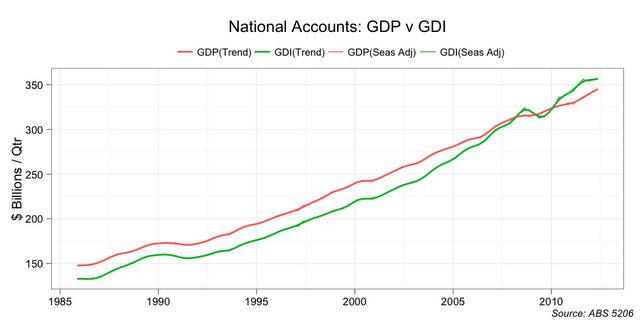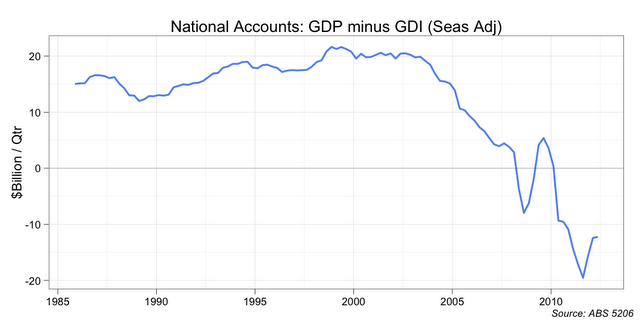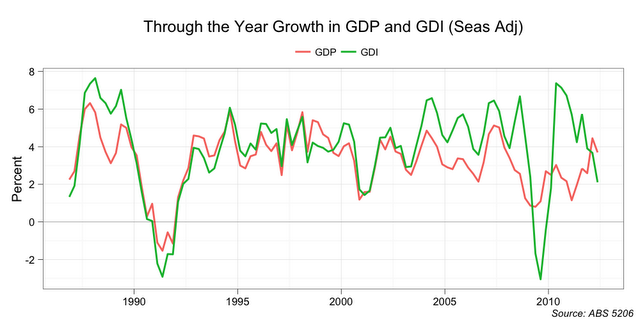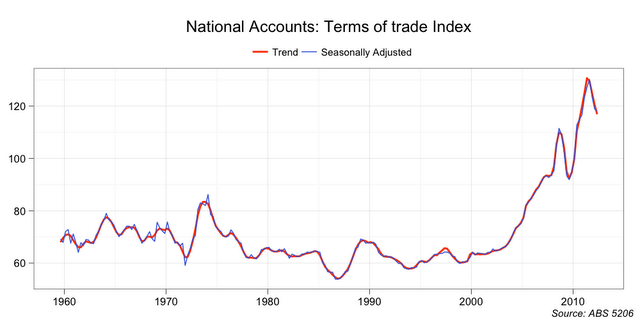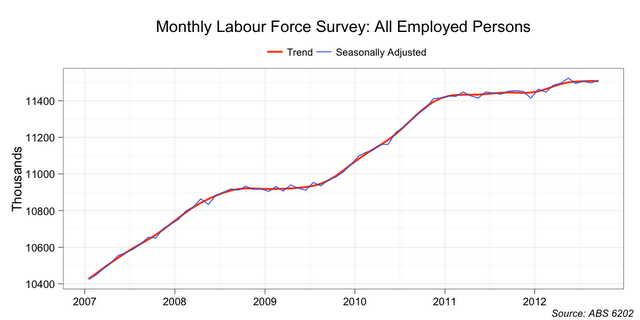
Cross-posted from Mark the Graph.
The main statistic we use to measure the size of the economy is Gross Domestic Product. The ABS defines GDP as:
The total market value of goods and services produced in Australia after deducting the cost of goods and services used up (intermediate consumption) in the process of production, but before deducting allowances for the consumption of fixed capital (depreciation). It is equivalent to gross national expenditure plus exports of goods and services less imports of goods and services.
But GDP is not the only indicator of the size of the national economy. Real Gross Domestic Income (GDI) is another. According to the ABS, the real purchasing power of income generated by domestic production is affected by changes in import and export prices. Real gross domestic income adjusts the chain volume measure of GDP for the terms of trade effect. Some argue that GDI is a more accurate measure of the size of our economy than GDP.
Let’s look at some charts.
What to make of all this?
I am going to theorise that there is a long-run equilibrium relationship between GDP and GDI. Statisticians have a lovely technical term for this kind of relationship: cointegration. In the long-run real GDP lies some $15 to $20 billion above GDI. Up until the early noughties, both series grew at a similar pace. Since mid 2002, the start of the terms of trade boom, this relationship has broken down. Another chart.
If I am right, and these series are cointegrated in the long-run, then over time as the ToT boom unwinds we can expect the GDP-GDI relationship to return to its equilibrium difference relationship (that existed prior to mid-2002). This will mean that something like $100 billion to $120 billion would be removed from our annual $1.4 trillion national income (around 7%).
That has got to hurt. I suspect it is already hitting employment. Since 2011 the GDI growth rate has declined significantly and the number of jobs in the economy has stagnated (not withstanding a GDP growth bounce at the same time). From Okun, a GDP bounce would normally be correlated with an unemployment fall.
If real GDI starts to actually decline, I suspect we will see the number of people in jobs decline. We will see government revenues decline (or at least slow in growth). Ultimately it may even challenge wage growth that exceeds inflation.
It is not going to be pretty as we learn to live on a reduced nation income.

